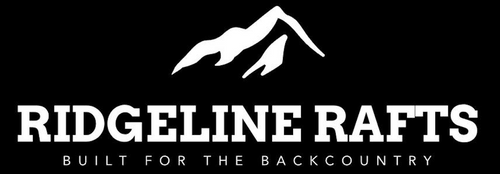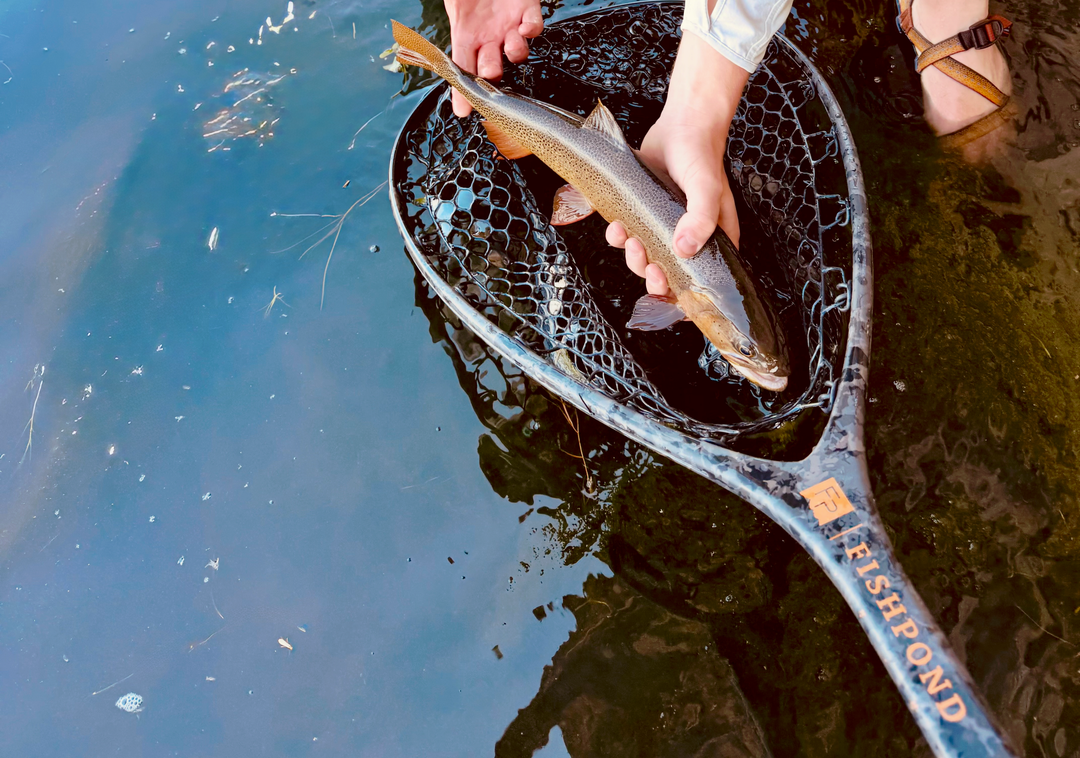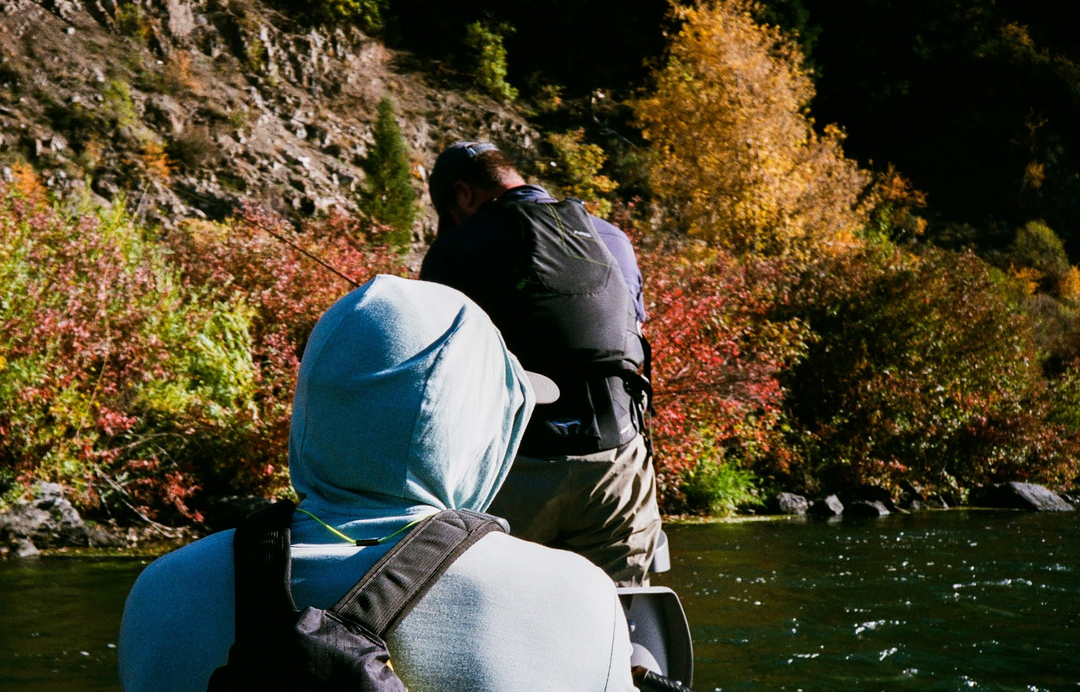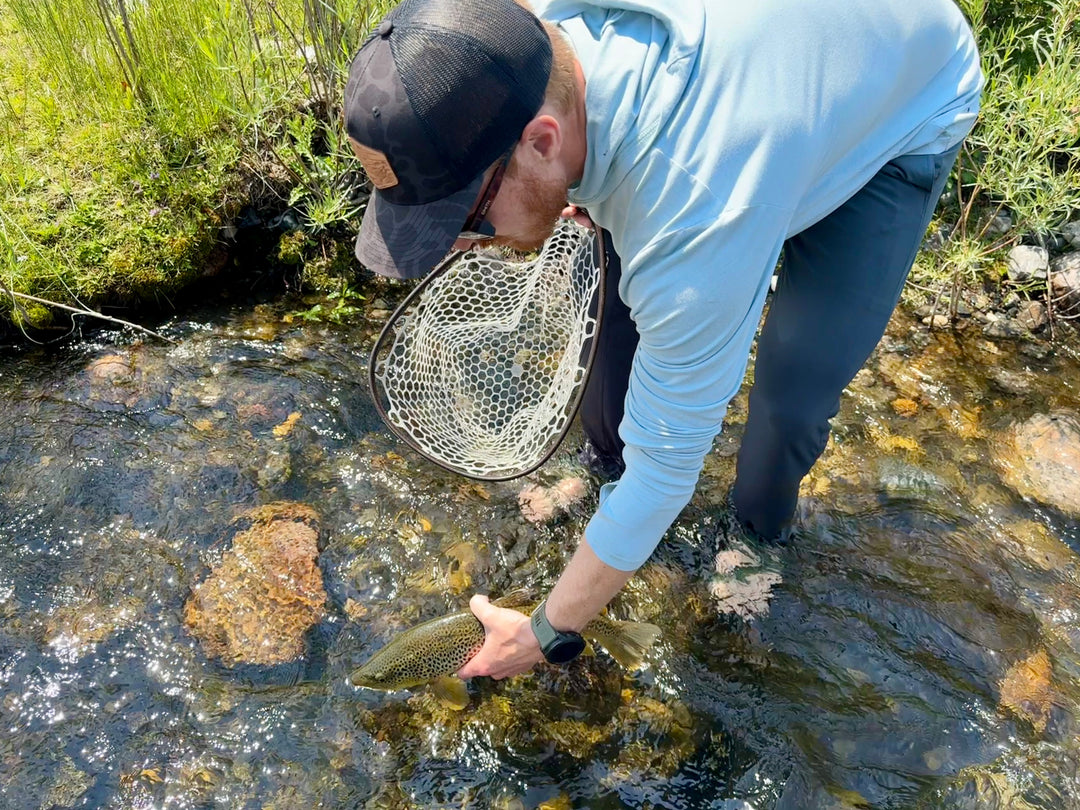Inflatable Fishing Boat vs Drift Boat: Cost

When anglers start looking for a boat to expand their fishing opportunities, one of the biggest questions they face is cost. Two of the most popular options—drift boats and inflatable fishing boats—offer distinct advantages, but their price tags can vary widely depending on several factors. From the initial purchase to long-term upkeep, the total investment in a fishing boat goes beyond just the sticker price. Understanding these costs can help anglers make an informed decision that aligns with both their budget and fishing style.
In this post, we'll break down the financial aspects of both drift boats and inflatable fishing boats. We’ll look at:
-
The costs of buying new
-
The cost of going the used boat route
-
How accessories and upgrades can add up
-
Routine maintenance required to keep each type of boat in top shape.
-
Finally, we'll examine major repairs and unexpected expenses, which can impact the overall cost of ownership.
Whether you're considering a traditional hard-sided drift boat or a lightweight, packable inflatable, knowing what to expect financially can help you choose the best option for your needs.
While price is a major factor, it's not the only one to consider when deciding between a drift boat and an inflatable fishing boat. Durability, ease of transport, storage requirements, and overall fishing experience all play a role. However, having a clear picture of the total cost—both upfront and over time—can make it easier to weigh those factors. Let's dive into the details and break down what you can expect to spend on a great boat.
What to Expect When Buying New: Drift Boat vs. Inflatable Rafts
Purchasing a new fishing boat is a big investment, and understanding what to expect can help anglers make the right choice when they have a better understanding of what they are actually getting for their money. Here’s a breakdown of the costs, accessories, and key considerations when buying new.
Base Cost
-
Entry-Level: $8,000 – $12,000
-
Mid-Range: $12,000 – $25,000
-
High-End: $25,000 – $40,000+
-
Used Drift Boats: Even 20-year-old models often sell for $8,000 – $10,000
Required Accessories and Additional Costs
-
Trailer: $1,500 – $3,500 (required for transportation)
-
Oars and Oar Locks: $400 – $1,500
-
Anchor System: $300 – $700
-
Seats and Cushions: $200 – $600
-
Boat Cover: $300 – $800
-
Registration Fees: Varies by state, often $50 – $150 annually
-
Paint and Hull Maintenance: $500+ every few years
Storage Considerations
-
Requires a garage, storage unit, or dedicated outdoor space
-
Make sure you measure how much space you are actually working with because if you are just looking at the length of the vessel and not it's total length plus the trailer...you just made a very expensive "oops". You may think "who would do that?" And unfortunately a shocking number of people do.
-
-
Additional cost if a covered storage facility is needed
-
Exposure to weather can degrade paint and materials over time
Long-Term Costs
-
Regular maintenance including paint, hull repairs, and trailer upkeep
-
Costs for replacement parts such as oars, anchors, or seats over time
-
Higher resale value compared to inflatable boats but also more expensive to maintain and smaller audience to resale too.
Buying a New Inflatable Boat: What to Expect
Base Cost
-
Entry-Level Rafts: $2,500 – $5,000
-
Mid-Range Rafts: $5,000 – $8,000
-
High-End Rafts: $8,000 – $12,000
Included and Optional Accessories
-
Many inflatable boats come equipped with basic necessities, reducing extra costs
-
Oars: Included, but nicer rafts will included premium oars
-
Anchor System: $150 – $300
-
Pumps and Inflation Tools: Usually included, but electric pumps can cost $100 – $300
-
Seats and Frames: Often included, but premium seats can cost $200 – $500
-
Fishing-Specific Add-ons (Rod Holders, Decking, Motor Mounts, etc.): $200 – $1,000
Storage Considerations
-
Lightweight and can be rolled up and frame broken down and packed in a small space
-
No need for a dedicated garage spot or storage unit
-
Weather exposure is less of a concern compared to drift boats
Long-Term Costs
-
Minimal maintenance costs, mostly limited to patching small holes ($10 for Aqua Seal that you will never use all of)
-
High-quality materials like welded PVC and urethane coatings reduce the risk of leaks
-
Lower resale value compared to drift boats, but a larger audience to sell to and initial cost is significantly lower
Which One is the Better Investment?
Drift boats offer a classic fishing experience but come with high upfront and long-term costs. They require even greater investments as most are sold with heavy and bulky oars, regular maintenance, and dedicated storage. On the other hand, inflatable rafts provide a more affordable and low-maintenance option, making them the ideal choice for anglers who value versatility, access, and something that is highly portable. With lower costs in every category—from purchase price to upkeep—an inflatable fishing boat is the best value for most anglers and their families.
Buying A Used Boat: Costs, Condition, and Considerations
What to Expect When Buying a Used Boat: Drift Boat vs. Inflatable Raft
Purchasing a used fishing boat can be a great way to save money, but it comes with unique challenges and considerations. Whether you're looking at a drift boat or an inflatable raft, it's crucial to understand the costs, typical condition of used boats, what accessories are included, and potential hidden expenses.
Cost of a Used Drift Boat
Drift boats hold their value well, meaning even older models can be expensive.
-
Older entry-level models (15–20 years old): $5,000 – $10,000
-
Mid-range used drift boats (5–15 years old): $10,000 – $15,000
-
High-end used models (5 years old or newer): $15,000 – $20,000+
The price depends on factors like the boat's material (fiberglass, aluminum, or wood), included accessories, and overall condition. Older boats may need repairs, while newer models often come with higher-end features and better durability.
Common Condition Issues
A used drift boat might seem like a great deal, but hidden issues can lead to costly repairs. Some things to inspect include:
-
Hull Damage: Dents, cracks, or leaks, especially in fiberglass or wooden boats
-
Paint and Coating Wear: Chipped paint or worn gel coat that may require refinishing
-
Wood Rot (if applicable): Older wooden drift boats can develop rot in the floor reducing stability and making it far less rugged
-
Oar Locks and Anchor System Wear: Rusted locks or failing pulleys may need replacement
-
Trailer Condition: Many used drift boats come with trailers that might need new tires, bearings, or lights
What’s Typically Included?
Used drift boats are often sold with some accessories, but this varies based on the seller. Here’s what might be included:
-
Oars (usually included but may be worn or mismatched)
-
Anchor system (check rope, pulleys, and anchor for wear)
-
Seats (may need new cushions)
-
Trailer (always check the condition, as trailer repairs can add up quickly)
-
Rod holders and cup holders (older models may lack these)
Even if the seller includes these items, some may require replacement or upgrades, adding to the overall cost.
Hidden Costs to Watch Out For
Buying a used drift boat can come with hidden costs, including:
-
Trailer Registration & Repairs: $100 – $500+ depending on condition
-
Hull Repairs or Repainting: $500 – $2,000
-
New Oars or Anchor System: $300 – $1,000
-
Upgrades (seats, rod holders, custom modifications): $200 – $1,500
While you might save money upfront, these hidden expenses can add up quickly.
Used Inflatable Fishing Boat Cost
Cost of a Used Inflatable fishing boat
Inflatable rafts depreciate differently than drift boats, with price heavily influenced by material quality and how well they were maintained. Here’s a general range:
-
Older budget models (5–10 years old): $1,500 – $3,500
-
Mid-range used rafts (3–7 years old): $3,500 – $6,000
-
High-end used models (less than 5 years old): $6,000 – $9,000+
Common Condition Issues in Used Rafts
Inflatable rafts have different wear-and-tear concerns. When inspecting a used raft, check for:
-
Pinholes or Seam Leaks: Small leaks can be patched, but large seam failures are a red flag
-
Sun Damage: UV exposure weakens PVC over time, leading to cracking or fading
-
Floor and Frame Wear: Rigid floors may become punctured, and metal frames may rust
-
Valve Condition: Old or leaking valves can make inflation difficult or cause air loss
-
Patching History: Too many patches may indicate heavy prior use and potential long-term durability issues
Modern rafts with welded seams and reinforced coatings (like urethane over PVC) are far more durable and less likely to have these problems.
What’s Typically Included?
Sellers often bundle used rafts with accessories, though you should verify their condition before purchase:
-
Frame (should be included but check for rust or damage)
-
Oars (usually included, but they may be worn or low-quality)
-
Pump (manual pumps are often included; electric pumps may be an extra cost)
-
Seats (may be worn, but most are replaceable)
-
Anchor system (not always included; if present, check pulleys and rope wear)
Hidden Costs to Watch Out For
Though rafts are cheaper than drift boats overall, additional expenses can still add up:
-
Valve or Patch Repairs: $10 – $100 (simple fixes but still a consideration)
-
New Frame or Oars: $500 – $3,000
-
Floor Reinforcement or Repairs: $300 – $1,000 (if punctured or weak)
Even with these added costs, used rafts remain far cheaper to own and maintain compared to drift boats.
Which Used Boat is the Better Investment?
If cost is your main concern, an inflatable fishing boat will suit your better bar none. They have a lower upfront price, require less maintenance, and are easier to transport and store, but are still able to handle whatever your adventures may be. Used drift boats, while durable and long-lasting, require more expensive accessories, ongoing maintenance, and dedicated storage space.
Accessories on new boats
Essential "Accessories" That Aren’t Always Included
When purchasing a drift boat or an inflatable fishing raft, it’s easy to focus on the boat’s base price. However, many essential accessories are not included in the initial cost and will need to be purchased separately. These add-ons can significantly impact the total price of ownership. Below is a breakdown of common accessories that anglers should budget for when buying a boat.
Drift Boat Accessories Not Typically Included
-
Quality Oars ($750 - $1200)
-
Drift boats typically come with a low end full sized oar. These cheaper oars are substantially heavier than their higher tier siblings and make a heavy boat feel even heavier to row. A lot of these oars can weigh 10lbs a piece compared to their counter parts that are half the weight. 5 extra pounds on each pull adds up after a long day on the river. It also makes it harder to quickly make adjustments in class rapids because they're heavier.
-
-
Boat Covers ($150 - $300)
-
Most people don't want their boat to sit in the sun and weather for hours, days, weeks, on end so getting a boat cover can help preserve your vessel protecting it from UV damage and weathering.
-
-
Boat Trailer ($1,500 – $3,500)
-
Drift boats require a trailer, which sometimes isn't included with some dealers.
-
Used trailers may need new tires, bearings, or lights, adding to the cost.
-
Inflatable Raft Accessories Not Typically Included
-
The Correct Sized Oar ($500 - $1200)
-
There are a lot of raft manufacturers that sell their rafts with oars that are too small for their full size rafts. If you have a 3 person raft that weighs over 100lbs with a Cataract KBO or Sawyer SST you should only be using your raft on slow flat water and shouldn't take it anywhere with rougher water as that size oar is too small to effectively and safely handle powerful water and sizable waves. They also have smaller blades which means your catching less water with each pass of the oars making you work twice as hard to go a fraction of hte distances.
-
This is a cost cutting measure that you should be aware of and avoid. Yes they are lighter, and may be great for creeks in the midwest, but they are smaller diameter and flex far too much for most of our floats in the mountain west.
-
-
High-Pressure Electric Pump ($100 – $300)
-
A quality electric pump isn't needed, but it does make for quick and easy inflation.
-
-
In Raft Storage ($50-300)
-
When you have two anglers that frequently means typically means you'll carry a reasonable amount of gear on their trips and a boat box is a great option for those folks needing a bit of storage.
-
-
Rod Holders ($300)
-
This may not be a need if you're only fishing one rod and swapping out, but having the ability to carry multiple rods is helpful and helps explore all the possibilities a river my have (dry fly, nymph, hoppers, streamers, etc)
-
Routine Maintenance & Repairs
Owning a fishing boat comes with ongoing maintenance costs, and while both drift boats and inflatable fishing boats are built for rugged conditions, their upkeep and potential repair expenses differ significantly. Understanding these costs can help anglers budget wisely and avoid unexpected financial burdens.
Drift Boats
Drift boats require more frequent and expensive upkeep than inflatable fishing boats. Their hard-shell construction—whether aluminum or fiberglass—necessitates regular hull maintenance.
-
Aluminum construction may need occasional dent repairs and protective coatings ($100–$300 annually)
-
Fiberglass construction require gel coat refinishing every few years ($500–$1,000).
-
Trailers add another layer of expenses, including tire replacements ($150–$300 every 3–5 years), bearing greasing ($50–$150 per year), and trailer light repairs ($20–$100 as needed).
-
Oars wear out over time, requiring replacements every few years ($200–$600 per oar)
-
Anchor system components like ropes and pulleys may need periodic replacement ($30–$150).
In total, maintaining a drift boat costs between $300–$2,000 per year, depending on the level of upkeep required (and how much you actually care).
Inflatable fishing boats
Rafts, on the other hand, have significantly lower maintenance costs. Routine care primarily involves:
-
Cleaning ($Free.99 + elbow grease)
-
Applying UV protectant ($15 annually)
-
Checking for small leaks ($10–$50 for Aqua Seal or patch kits).
-
Oars and frames occasionally need maintenance, with new oars costing $200–$500 every few years and minor frame adjustments running $20–$100.
Proper storage also extends the boat’s lifespan, with storage bags or large plastic containers costing $50–$200. Annual maintenance costs for inflatable boats range from $50–$600, making them a more budget-friendly option for long-term ownership.
Major Repair Costs
Despite regular maintenance, both drift boats and inflatable fishing boats can sustain significant damage requiring costly repairs.
Drift Boats
Being rigid structures, these vessels are prone to hull damage from impact with rocks or rough terrain.
-
Minor aluminum dents can be repaired for $200–$500
-
Severe punctures requiring welding may cost $1,000–$2,500.
-
Fiberglass hull cracks can be even more expensive, ranging from $1,500–$4,000
-
In extreme cases, a full hull replacement could reach $5,000–$10,000.
-
If they are made with a honeycomb design (to help reduce weight) and you get a puncture that allows water on the inside its can be extremely tough to repair these damages with any kind of speed.
-
-
Since drift boats rely on trailers, a major trailer failure—such as a bent frame or axle break—can cost $500–$4,000 to repair or replace.
Severe repair costs for drift boats range from $1,000–$10,000+, depending on the extent of damage. Repairs here are not only financially expensive, but they really sideline you from the river for a substantial length of time. You have to transport them back to the manufacturer and then they have to work its repair into their schedule which could literally take months. If you find yourself in this situtation your probably won't be floating that season and should start looking for some other fishing adventures.
Inflatable fishing boats
Inflatable fishing boats, while less susceptible to catastrophic structural failure, can still experience major damage.
-
Small punctures are inexpensive to repair and can effectively be done yourself at home ($10–$50)
-
Large tears requiring professional fixes can cost $200–$600.
-
A full panel replacement for catastrophic damage may reach $1,000–$3,000.
-
-
Seam leaks and failures can occur with minor repairs costing $10–$200 and major fixes can run you $500.
-
Seam failures are much more common with rafts with glued or chemical seams (a strip of the boat material is glued over top of where the two seams meet) and will happened eventually to some degree or another.
-
Seam leaks and failures are very rare in rafts built with welded seams (the strip of material is melted together where to two seams meet to form an air tight seal)
-
-
If multiple air chambers are compromised, replacing the entire raft may be necessary, with costs ranging from $2,000–$8,000.
-
Frame damage is relatively rare except in extreme circumstances and can run you $100–$2,000 in repairs depending if you need a single piece replaced or you need to buy a whole new frame.
Worst-case repair costs for inflatable boats typically range from $2,000–$8,000.
Which One Costs More Over Time?
Overall, drift boats have higher maintenance and repair costs due to their hull construction, trailer reliance, and accessory upkeep. Annual costs range from $300–$2,000 for routine maintenance, while worst-case repairs can exceed $10,000. Inflatable boats require far less maintenance ($50–$600 per year) and have lower repair costs in most cases. However, a catastrophic puncture or seam failure could total the raft, requiring a full replacement.
For anglers seeking a lower-maintenance, cost-effective option, inflatable boats offer a clear financial advantage, but drift boats remain a worthwhile investment for those who prefer their durability and performance on the water.
Storage Costs: Keeping Your Boat Safe When Space is Limited
One of the biggest hidden costs of boat ownership is storage, especially if you don’t have enough space at home. Drift boats, which require trailers, take up significant room and often must be stored off-site, while inflatable fishing boats can be deflated and stored indoors with little hassle.
Drift Boat Storage Costs
Because drift boats are large, they typically require a garage, driveway, or dedicated storage facility. If you don’t have space at home, you’ll need to rent a storage unit or pay for outdoor storage.
-
Outdoor storage (basic lot rental): $50 – $150 per month ($600 – $1,800 per year)
-
Indoor storage (covered): $150 – $500 per month ($1,800 – $6,000 per year)
Inflatable Raft Storage Costs
Inflatable fishing boats eliminate most storage costs since they can be deflated and stored in a closet, basement, or garage. If stored off-site, costs are minimal.
-
Small storage unit (if needed): $30 – $100 per month ($360 – $1,200 per year)
Conclusion
Drift boats require significantly more expensive storage, while inflatable rafts offer a low-cost or even free storage solution that saves thousands over time.




